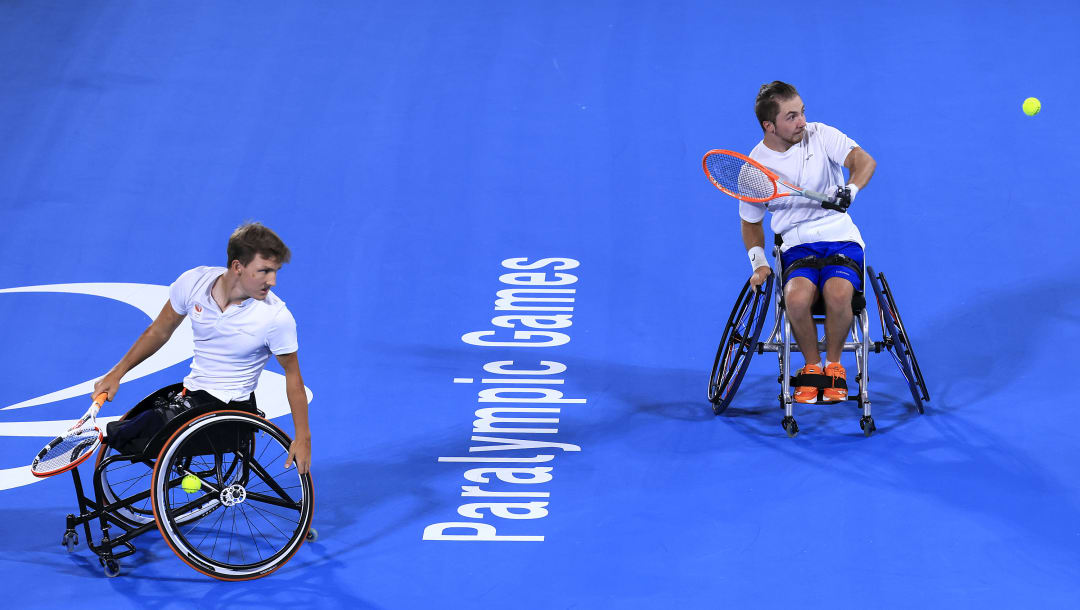Dutch young guns win Wheelchair Tennis quad doubles gold
The Netherlands’ Sam Schroder and Niels Vink have won gold in the quad doubles besting reigning champions Dylan Alcott and Heath Davidson of Australia 6-4 6-3 at the Tokyo 2020 Paralympic Games.
It marked a changing of the guard as the 21-year-old Schroder and 18-years-old Vink won gold on their Paralympic debut and have undoubtedly shown the new generation of wheelchair tennis players are ready to make big waves.
“I have no words. It’s just crazy that we achieved this at such a young age already,” Schroder said after the win.
“It’s incredible to win a gold medal being only 18 and 21 and in our first Paralympic Games,” Vink echoed.
The gold medal match started off evenly with neither side able to find the break in the first six games.
Play was put on hold momentarily during the first set to close the roof of centre court at Ariake Tennis Park after it started raining. But just two games later the Netherlands pair found their much-needed break after five unforced errors from the Australian duo saw Schroder and Vink take the first set.

Sam Schroder (R) and Niels Vink of Team Netherlands during the Wheelchair Tennis Men’s Quad Doubles Golden Medal match at the Tokyo Paralympic Games (Photo by Buda Mendes/Getty Images)
2021 Getty Images
With momentum now falling the way of the young Dutch duo, they took an early 3-1 break in the second set.
Australia, who were willing themselves to stay within the match, took the chance to break back at 3-4 before the Netherlands stole the break back, making it 5-3.
With the gold medal put into the hands of Vink, who was serving for the game, he didn’t put a foot wrong as the Netherlands pair soon found themselves as gold medallists.
Unfortunately, there won’t be too much celebration going on tonight with both Schroder and Vink back in action on 2 September.
“Not too much because he [Schroder] has a gold medal match tomorrow (in singles), and I have a bronze medal match,” Vink said.
Meanwhile, in the quad doubles bronze medal match, Japan’s MOROISHI Mitsuteru, and SUGENO Koji were leading Great Britain’s Antony Cotterill and Andy Lapthrone 2-1 in the first set before rain interrupted play Court 1.
After the match resumed on Centre Court, it was the Japanese duo who were victorious in a three-set thriller 7-5 3-6 7-5 that finished around 2:00 am JST.







 images.wsj.net/im-369145?width=620&size=1.5023474178403755 620w,
images.wsj.net/im-369145?width=620&size=1.5023474178403755 620w,  images.wsj.net/im-369150?width=620&size=1.5403128760529483 620w,
images.wsj.net/im-369150?width=620&size=1.5403128760529483 620w,  images.wsj.net/im-369149?width=620&size=1.4050493962678376 620w,
images.wsj.net/im-369149?width=620&size=1.4050493962678376 620w, 